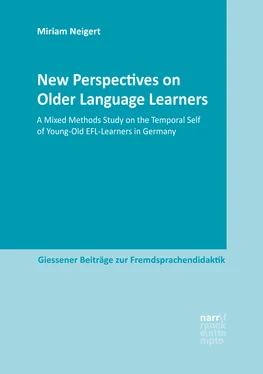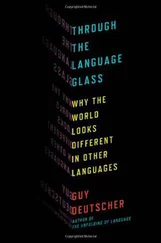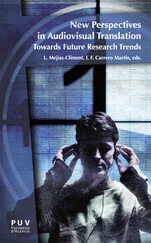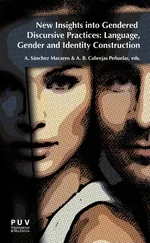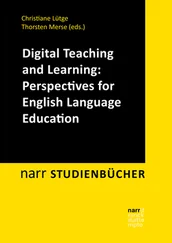Miriam Neigert - New Perspectives on Older Language Learners
Здесь есть возможность читать онлайн «Miriam Neigert - New Perspectives on Older Language Learners» — ознакомительный отрывок электронной книги совершенно бесплатно, а после прочтения отрывка купить полную версию. В некоторых случаях можно слушать аудио, скачать через торрент в формате fb2 и присутствует краткое содержание. Жанр: unrecognised, на английском языке. Описание произведения, (предисловие) а так же отзывы посетителей доступны на портале библиотеки ЛибКат.
- Название:New Perspectives on Older Language Learners
- Автор:
- Жанр:
- Год:неизвестен
- ISBN:нет данных
- Рейтинг книги:4 / 5. Голосов: 1
-
Избранное:Добавить в избранное
- Отзывы:
-
Ваша оценка:
- 80
- 1
- 2
- 3
- 4
- 5
New Perspectives on Older Language Learners: краткое содержание, описание и аннотация
Предлагаем к чтению аннотацию, описание, краткое содержание или предисловие (зависит от того, что написал сам автор книги «New Perspectives on Older Language Learners»). Если вы не нашли необходимую информацию о книге — напишите в комментариях, мы постараемся отыскать её.
New Perspectives on Older Language Learners — читать онлайн ознакомительный отрывок
Ниже представлен текст книги, разбитый по страницам. Система сохранения места последней прочитанной страницы, позволяет с удобством читать онлайн бесплатно книгу «New Perspectives on Older Language Learners», без необходимости каждый раз заново искать на чём Вы остановились. Поставьте закладку, и сможете в любой момент перейти на страницу, на которой закончили чтение.
Интервал:
Закладка:
The above expressions of gratitude show that undertaking this PhD has been an exciting and rewarding journey. Finally, I would like to thank my parents, Michael and Marlies, who have been at my side during all my journeys in life so far, and who were always there for me when I needed them.
1. Introduction
The older I get, the braver I become.
Jennifer, 68, retired.
Jennifer1 had only recently joined my English class at a local adult education centre ( Volkshochschule , hereafter: vhs centre). In her interview, she told me about her doubts before she joined this course, which was specifically designed to practice conversation. But despite her doubts, she gave it a try and did not regret her choice. Yet, her statement indicates that as a younger woman, she possibly would have refrained from doing so. It is learners like Jennifer who made me want to find out more about how older learners approach learning a language. On my search for answers, which started long before my PhD during my studies at university, I discovered that research on how foreign or second languages are learned and taught has widely neglected older adults (see chapters 3 and 4). Very often research in this field is based on the assumption that adulthood (i.e. everything past the age of 18) is a stable and uniform concept (but see: Kade 2009; Dannefer & Settersten 2010; Schmidt-Hertha 2014). Moreover, as soon as age and ageing are explored in conjunction with this research, it is explored in terms of the possibilities and boundaries of second language acquisition (e.g. critical period hypothesis; Singleton & Ryan 2004; Schramm 2010; Herschensohn 2007). Therefore, this thesis aims to provide new perspectives on older language learners by studying their language learner self and its temporal facets: how do older learners perceive their past, current (or actual), and future language learner selves? In order to move away from a uniform view of adulthood, my study will narrow down the focus on a specific group of older learners I refer to as ‘young-old’ (see chapter 2). Young-old learners are between 60 and 80 years of age, mostly retired, and are still active in that they are interested in starting or continuing learning English as a foreign language. It is hoped that my study can open up new ways to view older adults who learn foreign languages and that it initiates further discussions about adapting language learning programs to their expectations and needs.
1.1 The Elephant in the Classroom – Demographic Changes, Adult Education, and Language Learning
Industrialized nations, such as Germany in the context of this study, have witnessed a demographic shift leading to an ageing society. More and more people grow older and remain relatively healthy and active for longer, while at the same time birth rates remain at a low level. This has its impacts on the structure of our life course and also on the economy in that people will be able and possibly required to work longer throughout their lives. Simultaneously, “perforated” working lives have become more common in industrialized countries resulting in more frequent professional changes. These societal and economic shifts require people to adapt to new circumstances and ultimately to be willing to keep learning throughout their lives – the keyword here being “lifelong learning” (Jarvis 2009a; Komp & Aartsen 2013).
Yet, while this has become a widely debated issue in politics and the economy, it appears that the role of age and ageing in educational research is only slowly being recognized as a pressing issue (Hammond 2005; Jovic & McMullin 2011; Kolland & Klingenberg 2011: 19; Käpplinger 2014). In other words, older language learners and their needs have been the ‘elephant in the classroom’, which will be addressed in the course of this study (Ramírez-Gómez 2016; Berndt 2003; Doff 2005; Raasch 2005). If we are to address the growing demand for lifelong learning, researchers and educational practitioners need a better understanding of learning in adulthood, and, more specifically, in later adulthood. As mentioned above, research – including foreign language research – has treated adulthood as a uniform construct and for the most part conducted empirical studies with younger adults (see chapter 3). However, it does not take long for teachers to notice differences between a language learner who is 28 years of age and a language learner who is 68 years of age and retired – both being adult learners. Thus, I hope to redirect the focus of foreign language research to older language learners and add to a growing field of “foreign language geragogy” (Berndt 2003; Ramírez-Gómez 2016). With this, my study contributes to the research on lifelong learning by looking at people who – quite literally – have chosen to keep learning their whole life, even beyond their working life. The aforementioned vhs centres (see chapter 4) are the hub for lifelong learning in Germany as they are the main – and in some areas the only – provider of continuing education. Vhs centres in Germany attract many of the older learners who are interested in starting to learn or brushing up on their English. This makes this learning context a suitable starting point for carrying out my research on how the young-old learn languages.
To better understand older learners, I decided to investigate their language learner self-concept and its temporal facets (Dörnyei 2005; Mercer 2011; Mercer & Williams 2014). As this study will exemplify, using a mixed method research design which combines quantitative and qualitative data enables researchers in the field to explore the complexities of language learner self (see chapters 4 to 7). It is hoped that the results of this study will inspire other foreign language researchers to pursue this direction of research. For institutions such as the vhs centres in Germany, it is important for them to find out how to attract and retain older learners to their course programmes. This study provides a foundation for future decision-making by these institutions. My research aims to provide instructors who are working with older learners with a better understanding of why and how young-old language learners approach learning English in- and outside the classroom.
1.2 Chapter Outline
To achieve a better understanding of young-old language learners, the following chapters cover the theoretical overviews (chapters 2 and 3), the methodological framework and research context for this research project (chapter 4), and finally the empirical work conducted (chapters 5, 6, and 7). A concluding chapter briefly outlines the results and discusses the implications of the research outcomes. With regard to the theoretical foundations, chapter 2 will provide a better understanding of the participants in this study: the young-old language learners. What differentiates the young-old learners from the participants in most other research studies on language learning is their age. As chapter 2 will highlight, there is more to age and ageing than the mere chronological perspective. Using different dimensions of ageing – biological, chronological, sociological, and psychological age – chapter 2 provides a working definition of “young-old” for this study. The chapter ends with a brief overview of previous studies on older language learners in the field of SLA, which reveals the need for more research in this area.
With a focus on self-concept within the realm of foreign and second language research, chapter 3 addresses a second theoretical foundation of this study – self-concept within psychological research. This detailed overview includes the nature of self-concept and its formation over the life course. This is followed by a discussion of other self-terms, which are also commonly investigated in SLA research, to further clarify the meaning of self-concept. The focus is then further narrowed down to the temporal aspects of self-concept and theories connected to this: possible selves, self-determination theory, and self-discrepancy theory. What are the dynamics between our past, present, and future self-concepts? What makes us work towards or away from a certain future self? Do we learn a foreign language because of our personal ideals and aspirations, or because we think we are expected to do so? In its final sections, chapter 3 connects these temporal aspects of self-concept to recent SLA research on the language learner self. The chapter introduces the L2 Motivational Self-System (Dörnyei 2005, 2009) which comprises ideal as well as ought-to L2 self guides, and the L2 learning experience. It is hoped that this model helps to provide a better understanding of the young-old language learners in this study. Having presented and discussed the theoretical foundations, chapter 3 concludes with the major questions addressed by this study.
Читать дальшеИнтервал:
Закладка:
Похожие книги на «New Perspectives on Older Language Learners»
Представляем Вашему вниманию похожие книги на «New Perspectives on Older Language Learners» списком для выбора. Мы отобрали схожую по названию и смыслу литературу в надежде предоставить читателям больше вариантов отыскать новые, интересные, ещё непрочитанные произведения.
Обсуждение, отзывы о книге «New Perspectives on Older Language Learners» и просто собственные мнения читателей. Оставьте ваши комментарии, напишите, что Вы думаете о произведении, его смысле или главных героях. Укажите что конкретно понравилось, а что нет, и почему Вы так считаете.
